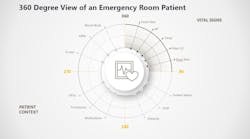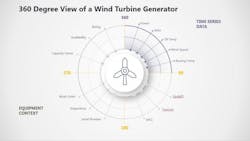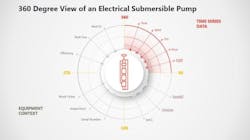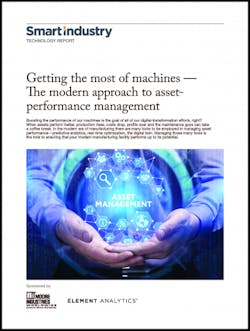By Heathcliff Howland, Element’s senior director of customer success
Lately, my daughter and I have been binge watching doctor shows—episodes in which genius physicians pick up bits of patient context from a conversation with a family member, an overlooked x-ray, a buried report or some other stray clue that leads to a brilliant moment of clarity and a prescriptive recommendation that saves the patient's life.
Every time I finish one of these episodes, I can’t help but think about the analogy between patient health and industrial-equipment health or, more specifically, physiological performance and asset performance. Both are about integrating disparate data sets to develop actionable insights.
Doctors can diagnose patients using sensor-based readings—temperature, blood pressure, pulse and oxygen saturation—but it is difficult to predict outcomes or prescribe a course of action without patient context…the information that describes how someone lives and the traits they have inherited. How often do they exercise? Is there a history of diabetes in their family? Do they smoke? Do they work as a software developer or a carpenter? For the genius physician to treat the “whole patient,” she needs a 360° view of the human; snapshot and historical records of vitals along with correlating information describing what has happened to the patient over time.
360-degree view of the machine
In heavy industry, it can be a struggle to create a complete picture of a machine’s health. Mostly, we take action based on “snapshot information” and wind up treating symptoms after they have affected machine and system performance. This snapshot info is usually time-series in nature and derived from equipment-control systems. This information is analogous to the vital signs that a nurse takes when a patient is admitted to her ER. Important, for sure, but not enough context to make decisions about treatment.
Similarly, to treat the “whole machine” you need to know who built it, how it performed at the factory before it shipped to you, how it has been cared for, what kind of parts and fluids has it consumed and what systems it is a part of. This equipment context must be merged with sensor and control system-based performance data to derive a 360° view of the machine before prescriptive analyses can reliably be performed.
At a recent OSIsoft seminar I attended a fantastic presentation by a large oil-and-gas exploration and production company. Reliability of their fleet of electric submersible pumps (ESPs) is important to them and, using the PI System, they've built valuable applications to monitor the performance of wells with ESPs. The presenter described their next big challenge with well surveillance—integrating non time-series (he called it reference data) with the ESP-data models they've already built using the PI System’s Asset Framework. He said "we don’t want to just show users the data. We want to give them answers."
In other words, he wants to treat the ”whole machine” so he can predict outcomes and prescribe a course of action—just like a genius physician on TV.
These graphics illustrates this challenge. To treat the whole patient or the whole machine, experts need to do more than just look at vital signs or time-series data between 0° and 90°. The contextual data from 90° to 360° needs to be connected and must remain up to date in order to give a complete 360° view—with no blind spots.
Where are your blind spots?
Not having a 360° view limits the depth and breadth of questions you can ask about equipment health. The bigger your equipment-context blind spot, the less likely you are to get answers to questions like:
- When might this failure happen again and on which units?
- How likely to fail are ESPs supplied by vendor A as compared to vendor C under specific conditions?
- How much more does it cost per unit production to operate ESPs supplied by vendor B as compared to all other vendors?
A holistic view of an enterprise—be it a human body or a modern industrial facility—enables you to answer those questions and optimally manage performance.
As the old adage goes…healthy, wealthy and wise.







